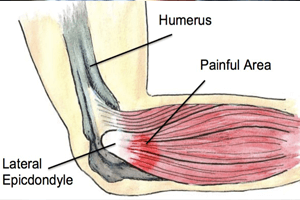How to Treat Tennis Elbow with Physiotherapy

While the term ‘tennis elbow’ is used because this is a common injury for tennis players, anyone who performs repetitive tasks with their hands and wrists can be susceptible, including office workers and manual labourers.

In the early stages, pain may be present with activity and quickly go away with rest, however, as it progresses the pain may be more constant, lasting for longer and occurring with smaller movements.
None of the information in this article is a replacement for proper medical advice. Always see a medical professional for an assessment of your individual condition. If your located in the Brisbane area book in to see us.


